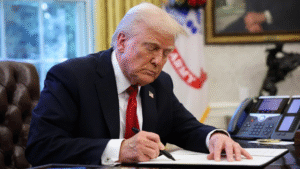How U.S.-China Tech Tensions Are Shaping Global Politics
In today’s interconnected world, technology is no longer just a commercial commodity—it’s a powerful geopolitical tool. Nowhere is this more evident than in the escalating U.S.-China tech tensions, which have evolved into a global standoff with far-reaching consequences.
From semiconductors to surveillance, artificial intelligence to 5G, the world\’s two largest economies are engaged in a race that extends beyond market share. It’s about influence, control, and the rules that will define the next digital era. As the tech rivalry intensifies, the stakes go beyond trade and innovation—they touch on national security, diplomacy, and global governance.
The Root of the Tensions
The seeds of this rivalry were planted over a decade ago, but recent years have seen a dramatic escalation. The U.S. has increasingly viewed China’s tech rise—especially through companies like Huawei, TikTok’s parent company ByteDance, and semiconductor giant SMIC—as a threat to both economic competitiveness and national security.
In response, Washington has implemented a series of measures including:
- Export bans on advanced semiconductor equipment to China
- Sanctions against Chinese tech firms
- Pressure on allies to avoid using Chinese infrastructure for 5G networks
China, in turn, has doubled down on its \”Made in China 2025\” plan, emphasizing tech self-reliance and massive investments in local chip manufacturing and AI development.
Tech Nationalism on the Rise
Both countries are increasingly practicing what some call \”tech nationalism\”—using state power to promote domestic champions and shield critical industries. In the U.S., the CHIPS and Science Act of 2022 is funneling over $50 billion into domestic semiconductor production. Meanwhile, China is offering subsidies and funding for strategic sectors through its state-led tech funds.
This approach is having ripple effects around the world. Countries from Europe to Southeast Asia are being asked to \”pick a side\” in tech infrastructure, privacy standards, and AI governance.
Global Impacts: Fragmented Internet and Divided Innovation
One major consequence of this rivalry is the growing fragmentation of the internet. Tech experts warn that we’re heading toward a \”splinternet\”—where global digital systems split into separate U.S.-led and China-led tech ecosystems.
For example:
- Data privacy laws vary drastically between the U.S., China, and the EU
- App ecosystems in China are dominated by local platforms like WeChat and Baidu, while U.S. apps are often banned or restricted
- Semiconductor alliances are forming, with the U.S. pushing partnerships with Taiwan, Japan, and the Netherlands
This digital decoupling could reduce global innovation by limiting knowledge exchange, standardization, and collaboration between the world’s top tech hubs.
The Security Dimension
At the heart of the issue is mutual distrust. The U.S. fears backdoors in Chinese hardware and surveillance concerns, while China sees American actions as efforts to contain its rise.
Cybersecurity, satellite technology, and even biotech are being militarized in subtle ways. In fact, the Pentagon recently flagged AI and quantum computing as national security priorities due to their potential use in defense systems—technologies in which both nations are heavily invested.
Room for Cooperation?
Despite tensions, there remain shared global challenges—like climate change, global health, and AI ethics—where U.S.-China cooperation could be mutually beneficial. Some analysts suggest that these tech powerhouses must find common ground on setting international standards for emerging technologies.
In March 2024, the U.S. and China reopened diplomatic talks on tech cooperation in areas like cybersecurity incident reporting and climate-focused tech innovation. Though early-stage, such efforts could reduce the risk of open conflict or unintended escalation.
Conclusion
The ongoing U.S.-China tech tensions represent more than a clash of two global economies—they are a defining battle over the future of power, privacy, and progress. As the rivalry plays out across global markets, policy frameworks, and digital ecosystems, the rest of the world is watching—and adapting.
Whether this race results in fragmentation or cooperation will depend on diplomacy, shared interests, and how each nation defines its role in the tech-driven century ahead.
Sources:




Post Comment